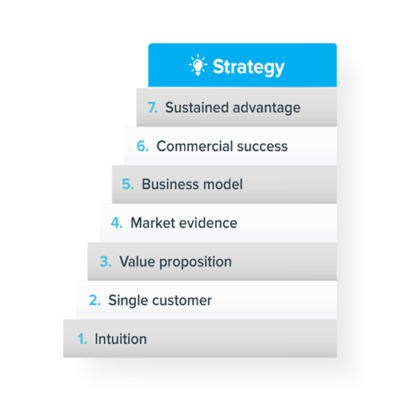
I have yet to talk to a business leader that says they don’t have a good strategy. However, I am familiar with several companies where their strategy is poorly defined, misunderstood, or a goal (not really a strategy).
The term strategy is often misunderstood. That is one of the main reasons for not including it in the title of this article. Even when understood, the process of forming a sound strategy is rarely done consistently.
As I write this article, I was reminded by my experience working with my 9 year old to build a pinewood derby car. I will use this example as we explore what is strategy, why the strategy formation process is overlooked, why we shouldn’t short change ourselves and how to prevent our teams and ourselves from trying to take shortcuts in the future.
What is Strategy
A lot has been written on this subject. I really like the definition of a good strategy that Richard P. Rumelt lays out in his book Good Strategy/Bad Strategy. Rumelt argues that a good strategy must contain 3 essential elements. In my own words, here is how I would describe them:
- A solid diagnosis of the situation
- Guiding principles
- An action plan
While I agree with Rumelt, I feel like the third component takes care of itself when an organization’s structure, process and people are all aligned to the strategy (see the Venturis Partners’ Maturity Models for more details).
In short, I would describe a good strategy as a solid diagnosis of the situation and guiding principles that your organization can act on. Here at Venturis Partners, we have further defined what a good diagnosis of a market situation is.
Pinewood Derby Begins

A pinewood derby is a racing event for cub-scout-built, miniature cars. When my son was first given his pinewood derby kit (block of wood and wheels), I asked him whether he wanted to design a cool looking car or something fast.
Now some of you might be asking, why can’t you do both. You can, but your design will be limited if you are designing for speed first. On the the flip side, your speed may be limited if we were designing purely for aesthetics. In other words, my son needed to decide what was most important to him.
In this simple example, my son chose to design for speed. That was his strategy. As a result, I helped steer his design choices to ones that would end up with a faster car (according to YouTube). One of these design choices was to choose a design that would allow us to implant more weight in the back of the car.
Unsurprisingly, Sound Strategies Lead to Sound Outcomes
Even my 9 year old son would agree with me that a good strategy should yield good results. When done right, a good strategy should influence or guide just about every decision made in an organization.
A good strategy will help you decide what not to spend your time on just as much as it will help you decide where to focus.
When someone, a group of people or an entire company harnesses that kind of focus and sense of purpose, much can be accomplished. However, one of my favorite quotes is that “Culture will eat strategy for lunch”. Your strategy won’t last long unless you align your organizational structure, processes and people around it. In other words, a good strategy alone won’t be enough by itself.
Subscribe To Our Blog
Receive an email every time we post an article relevant to your role
Pinewood Derby Results
Based on my son’s strategy to build a fast (winning) car, he set about to achieve that goal (with probably too much help from me). We choose an areodynamic design that allowed us to put the majority of the weight nearest the back of the car. We polished the axels, we had the car ride on 3 wheels instead of all 4, etc.
After a gruesome tournament, my son took 3rd place.

So If we know Strategy is Important, Why is it overlooked so often?
I think there are two major factors at play that cause us to skip or overlook strategy when kicking off a new initiative, business or project.
- We feel the urgent need to get to work and accomplish something
- We tend to work from a goal or hunch instead of doing the hard work of formulating a solid strategy
These two factors combined make for a strong current to fight against. Let’s explore each one in a little more depth.
The Spotlight Effect
Regardless of your role, the output of your work is what gets judged. Whether you are the CEO accountable to the board or an executive responsible to your boss, you are judged by the results you accomplish.
Since the spotlight is on the results or the output of our work, we feel a lot of pressure to get straight to work. As a result, we too often gloss over the strategy work and put our time and energy where the spotlight is shining.
This is why product managers often find themselves working very closely with development instead of conducting market research interviews, etc. There is rarely a spotlight on that kind of work – just the work that directly leads to a finished product.
Why Don’t All Kids Have Great Cars
So with YouTube and the internet, there are really only two reasons why every Cub Scout would not have a fighting chance at winning the Pinewood Derby.
- The parent of the cub scout takes a very hands off approach
- The parent and scout procrastinates and runs out of the time needed to make the fastest car possible.
One of my friends whose son competed in the race had an amazing looking car that did alright. My friend talked about how they were up late the night before using a dremel to cut out holes to place fishing weights into. Because they added the weights last, they were limited to where they could place them. They also didn’t have time to grind off the burs that are on each axle, further slowing the car down.
In this case, the spotlight won out; resulting in a beautiful car but not a car that reached its full potential.
As with most things in life, some extra planning would have kept crucial options open. Procrastination limited what could be done the night before.
A Goal or Hunch is Often Passed off as Strategy
Since the pull of the spotlight is so strong, we will often accept just about anything that seems reasonable as our strategy. For some, calling our goal the strategy feels right: “Our strategy is to grow revenue by 15% next year”. Others will take it a step further and provide at least some kind of how: “Our strategy is to grow our revenue by entering into the XYZ market”.
The problem with this shallow approach to strategy work is that we don’t have a strong basis for our hypothesis. We don’t really even how what the market size of the adjacent market is. We don’t know how well suited our existing product meets the needs of the new market, etc. We either feel like we don’t have time to figure some of these hard questions out or we don’t have the expertise. As a result, we charge ahead because we have goals to hit.
Level Up Your Strategy
Engage with Venturis Partners to help you evaluate your strategy and give it a boost. We will work with you to develop a plan that best fits your needs.
Contact UsHow do we Bring Balance to the Force?
(Yes, I just mixed Star Wars and Pinewood Derby metaphors)
So if one of the main causes for skipping over strategy is the spotlight effect, we need to put the spotlight to use in our favor. In other words, don’t fight it, just use it to your advantage.
One way to do this is to identify the activities that will lead to a more solid strategy and ask your boss for the spotlight to be shown on those activities. If you are the boss, then you can control where the spotlight goes.
Create measurements and regular goals to make sure that the necessary work to form a solid strategy is happening. Here are some activities you could consider:
- Shadowing customers and non-customers to better understand their workflows, jobs, goals and challenges
- Persona interviews to refine your understanding of the jobs to be done, pains and gains
- Win/Loss interviews to better understand how well your solution fits the market and how well your marketing and sales process matches your buyers’ journey
- Quantitative analyses (surveys) to quantify demand and test different solution concepts
- Incorporating 3rd party research when applicable
Establishing measures and goals on just one of these activities will have a big impact if your organization isn’t currently doing them.
The Pinewood Derby Metaphor Has it’s limits
While there are some extreme pinewood derby parents out there, I don’t suggest that you become one.
- You should not base your son’s or daughter’s allowance on how well polished his or her axles are
- Please don’t setup weekly scrum meetings with your cub scout
- Don’t buy an already made car with laser tuned alignment
Better Strategies Will Produce Better Results in the Long Run
While we intuitively know this, we rarely put the processes and measurements in place to build and maintain robust, market oriented strategies. Take a hard look at the major initiatives within your company or department. If you haven’t already, see how they stack up against our Strategy Maturity Model. The more mature your strategy is, the more likely it will lead to success. It won’t matter how good our people, processes or structure is. We have to get the strategy right (or close) before we can have any hope of success.




